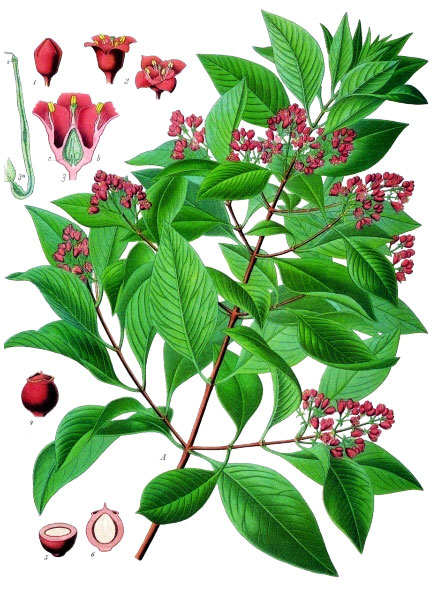Sandalwood

Family: Santalaceae
Scientific Name: Santalum spp.
Folk Names: Sandal, santal, sanders-wood, saunders
Selected Varieties:
- White Sandalwood (‘True’ Sandalwood): Santalum album
- Australian Sandalwood (Waang): Santalum spicatum
- Red ‘Sandalwood’: Pterocarpus santalinus (not a true sandalwood)
Ethical Concerns: White Sandalwood is currently officially listed as a vulnerable species by the International Union for the Conservation of Nature, and Red Sandalwood is currently listed as endangered by the IUCN.
Australian Sandalwood is the preferred species of sandalwood to use (and can be used the same as white sandalwood), however this has also recently been upgraded to vulnerable due to over-harvesting of wild plants, so please ensure you’re purchasing either plantation-grown sandalwood, or from one of the Indigenous-owned sustainable harvest businesses.
Magical
Element: Water
Moon Phase: Full moon
Day: Monday
Planet: Moon
Zodiac: Cancer
Associated Celebrations: ShadowFest
Deities: Venus, Vishnu
Magical Properties: Healing, spirituality, purification, protection, astral projection, peace, divination
Substitutions: Cinnamon, cedar
Magical Uses
- Sandalwood is often used as a base for ritual incenses.
- Scatter powdered sandalwood around a space to clear it of negativity.
- Mix sandalwood with lavender to create an incense that attracts spirits.
- Sandalwood powder is used as an incense for protection, healing, and exorcism.
- Associated with strong spiritual powers, sandalwood is commonly mixed with frankincense for spiritual and ritual use.
Aromatherapy
Part Used: Bark
Extraction Method: Steam distillation
Flash Point: 142°C
Scent Type: Woody
Perfume Note: Base
Scent Description: Rich, woody, and slightly sweet
Blends well with lavender, myrrh, rose, vetiver, and ylang-ylang.
Aromatherapeutic Uses
Sandalwood is calming and relaxing, and can help with stress, anxiety, depression, and insomnia.
